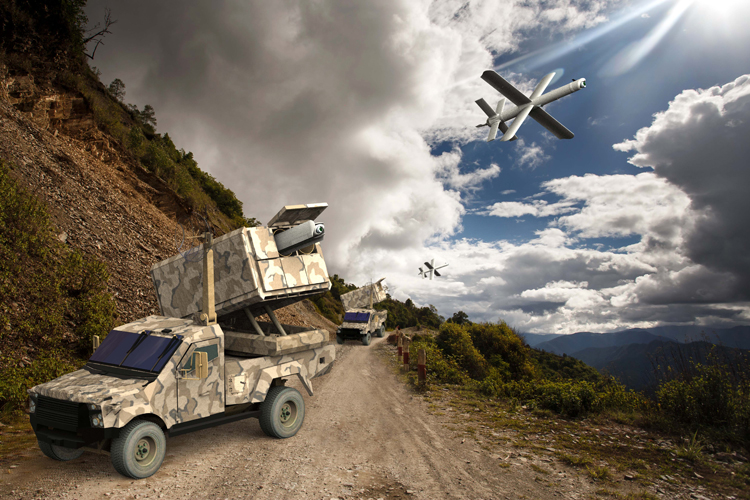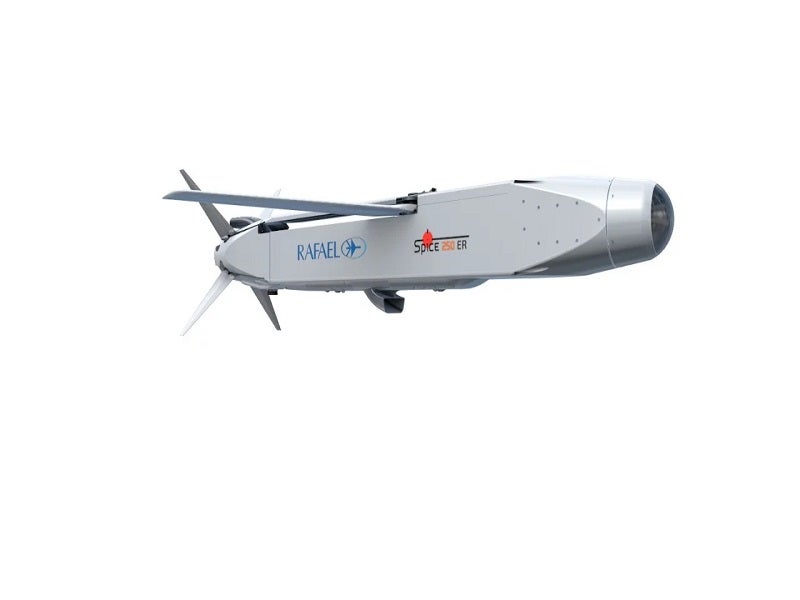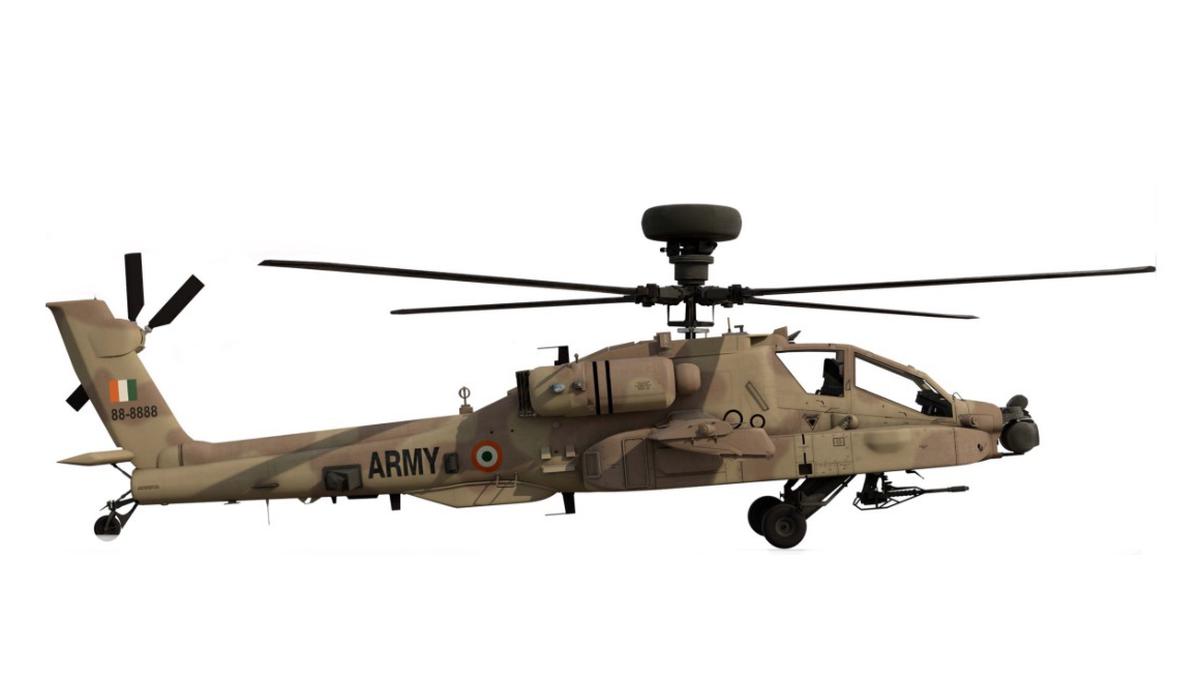Idrw Team
SOURCE: IDRW.ORG

The Indian Air Force (IAF) is set to enhance its strategic capabilities with the planned acquisition of the Spice-250 ER, a precision-guided glide bomb boasting a range exceeding 300 kilometers. This move, highlighted in recent discussions, aims to enable long-range stand-off weapon (SOW) strikes on Pakistani military targets, positioning the IAF to engage adversaries from well beyond the reach of Pakistan’s PL-15 and PL-17 long-range air-to-air missiles (LRAAMs).
The Spice-250 ER, developed by Israel’s Rafael Advanced Defense Systems, is an advanced variant of the Spice family, featuring a micro-turbojet engine that significantly extends its stand-off range compared to earlier models. This upgrade allows the IAF to strike deep into enemy territory without exposing aircraft to hostile air defenses or fighter jets, a critical advantage given Pakistan’s growing arsenal. The PL-15, a Chinese-supplied beyond-visual-range missile with a reported range of up to 300 kilometers, and the emerging PL-17, are key components of the Pakistan Air Force’s (PAF) air superiority strategy, posing a challenge to Indian aircraft operating near the border.
Continue readingSOURCE: IDRW.ORG

The Aeronautics Development Establishment (ADE), a premier aerospace research organization, has embarked on an ambitious project to design and fabricate an experimental canister-launched Unmanned Aerial Vehicle (UAV) with advanced wing and fin deployment mechanisms. This cutting-edge initiative marks a significant milestone in ADE’s pursuit of futuristic technologies to meet the evolving demands of its aerospace projects. The development of this UAV, a first-of-its-kind endeavor for ADE, underscores its commitment to pioneering niche technologies in the field of unmanned systems.
The project involves the fabrication of two UAV airframe structures equipped with wing and fin deployment mechanisms, alongside associated non-recurring engineering (NRE) charges for a single job. The development process adheres to a meticulously outlined scope of work, emphasizing precision, quality, and innovation. The UAV airframe will be constructed using a combination of metallic and composite materials, with stringent quality control measures to ensure compliance with ADE’s rigorous standards.
Continue readingSOURCE: IDRW.ORG

At the Paris Air Show 2025, Hindustan Aeronautics Limited (HAL) Chairman and Managing Director Dr. DK Sunil spoke to FlightGlobal at the company’s chalet, showcasing significant advancements in India’s indigenous defense programs. Among the highlights was the successful delivery of 15 Prachand Light Combat Helicopters (LCH) to the Indian military, with improvements in maintainability based on feedback from the armed forces.
Responding to feedback from India’s military, HAL has made significant enhancements to the Prachand’s design to improve ease of maintenance. “The Prachand is a very agile aircraft with a very small radar cross section,” Dr. Sunil noted, highlighting its operational strengths. “It’s a very capable platform.” The improved maintainability is expected to enhance the helicopter’s operational readiness, addressing the armed forces’ need for reliable and efficient platforms in demanding conditions. The new batch of 156 Prachands will also feature upgraded weapons systems, including anti-tank missiles, further boosting their combat capabilities.
Continue readingSOURCE: IDRW.ORG

In a significant step forward for India’s indigenous defense capabilities, the Light Combat Aircraft (LCA) Tejas Mk-1A, manufactured at Hindustan Aeronautics Limited’s (HAL) newly established production line in Nashik, is poised for its maiden flight in mid-July 2025. This milestone comes after a 16-month delay, with HAL now accelerating efforts to deliver the first batch of these advanced fighter jets to the Indian Air Force (IAF) by August 2025.
The LCA Mk-1A, an upgraded variant of the Tejas, is a cornerstone of India’s push for self-reliance in defense manufacturing under the Atmanirbhar Bharat initiative. Designed to enhance the IAF’s operational capabilities, the Mk-1A features advanced avionics, an active electronically scanned array (AESA) radar, improved electronic warfare systems, and enhanced weaponry, including beyond-visual-range (BVR) missiles. These upgrades make it a formidable 4.5-generation multirole fighter, tailored to meet the IAF’s modern combat requirements.
Continue readingSOURCE: IDRW.ORG

In a significant stride toward bolstering India’s artillery capabilities, Bharat Dynamics Limited (BDL) and Larsen & Toubro (L&T) Defence have joined forces with the Defence Research and Development Organisation (DRDO) to develop the next-generation Pinaka Mk-III multi-barrel rocket launcher (MBRL) system. According to industry sources, the Indian Army is poised to receive the advanced system soon, with user trials scheduled to commence by the end of 2025. This collaboration, potentially valued at over ?25,000 crore, underscores India’s commitment to indigenous defence innovation under the Aatmanirbhar Bharat initiative.
The Pinaka Mk-III, an evolution of the battle-proven Pinaka MBRL system, is designed to deliver enhanced range, precision, and firepower, positioning it as a cornerstone of the Indian Army’s artillery modernization. Developed by DRDO’s Armament Research and Development Establishment (ARDE) in Pune, the Mk-III boasts a range of 120 km, nearly doubling the 60–75 km reach of the Pinaka Mk-II. Its 300 mm caliber, compared to the 214 mm of earlier variants, accommodates advanced propellants and guidance systems, enabling precise strikes against high-value targets like command posts, logistics hubs, and air defence systems.
Continue readingSOURCE: IDRW.ORG

Goodluck Defence and Aerospace Private Limited, a subsidiary of Good Luck India Limited established on August 31, 2023, is poised to transform India’s defence manufacturing landscape with its advanced 155 mm artillery shell production facility. The company has announced that the plant, designed to produce 150,000 M107 shells annually, is well ahead of schedule and awaiting government clearances for trial commissioning. Coupled with the recent commissioning of a precision tube plant, this development is set to be a “game changer” for Good Luck India, according to Chairman M.C. Garg. The company’s exceptional performance in the last quarter of FY24 further underscores its robust growth trajectory.
Goodluck Defence and Aerospace was established to capitalize on India’s growing defence sector under the Aatmanirbhar Bharat initiative. The subsidiary focuses on forging, machining, heat treatment, and coating of steel and alloys, with a primary emphasis on producing 155 mm artillery shells, critical for modern howitzer systems like the Indian Army’s M777 and Dhanush guns. These shells, with a firing range of 24–32 km, are versatile, supporting high-explosive, precision-guided, armor-piercing, and other variants, making them a cornerstone of modern warfare.
Continue readingSOURCE: IDRW.ORG

Solar Group has made a groundbreaking debut by showcasing the full operational system of its indigenous counter-drone solution, Bhargavastra, mounted for the first time on a 4×4 light truck. This innovative multi-layered system, designed to neutralize drone threats using both guided micro-missiles and unguided rockets, marks a significant milestone in India’s defense technology landscape. The system was successfully tested at the Gopalpur Seaward Firing Ranges on January 12 and 13, 2025, where it demonstrated its capability by hitting virtual targets over 2.5 kilometers away, offering a cost-effective response to the rising threat of swarm drones.
Developed by Economic Explosives Ltd (EEL), a subsidiary of Solar Group, Bhargavastra leverages cutting-edge technology to address the challenges posed by autonomous drone swarms, which have become a prominent concern in modern warfare. The system’s dual-layer approach includes unguided rockets for wide-area swarm neutralization and precision-guided micro-missiles for targeted strikes, ensuring versatility against diverse aerial threats. Its ability to detect small incoming drones at ranges exceeding 6 kilometers, with radar capable of identifying medium to large unmanned aerial vehicles (UAVs) up to 10 kilometers away, underscores its advanced detection capabilities.
Continue readingSOURCE: IDRW.ORG

In the wake of India’s Operation Sindoor, a four-day military engagement from May 7 to May 10, 2025, Chinese defense analysts and social media commentators have sharply criticized Pakistan’s handling of the Chinese-supplied HQ-9 air defense system, labeling its personnel as “mute spectators” due to operational inefficiencies and inadequate training. The operation, launched in retaliation for a terrorist attack in Pahalgam, Jammu and Kashmir, on April 22, 2025, which killed 26 civilians, saw Indian forces penetrate Pakistan’s air defenses with ease, leveraging superior missile technology, satellite intelligence, and electronic warfare (EW).
The destruction of several HQ-9 batteries by Indian loitering munitions, alongside losses of fighter jets, surveillance aircraft, drones, and radar sites, has not only embarrassed Pakistan’s military but also cast significant doubts on the reliability of Chinese defense exports, particularly the HQ-9 system. This article examines the reasons behind the HQ-9’s failure, its implications for China’s global arms market ambitions, and the broader strategic fallout for the China-Pakistan defense partnership.
Continue readingSOURCE: IDRW.ORG

In a significant move to strengthen its military capabilities, the Indian Ministry of Defence has authorized the armed forces to replenish their inventory with advanced long-range loitering munitions, artillery shells, kamikaze drones, and beyond-visual-range air-to-air missiles. This decision follows the critical role played by these precision weapons in recent military operations, notably Operation Sindoor, which targeted Pakistani military installations, according to a report by Hindustan Times.
The operation showcased India’s growing prowess in unmanned warfare, with long-range loitering munitions penetrating Pakistani airspace and neutralizing key assets, including a Chinese-supplied HQ-9 missile launcher and several Pakistan Air Force (PAF) radars.
Continue readingSOURCE: IDRW.ORG

Larsen & Toubro Ltd (L&T), India’s leading engineering and construction conglomerate, is poised to significantly expand its naval shipbuilding business by strengthening collaborations with state-owned defence shipyards and pursuing direct contract wins, according to a top company official. With a defence order book exceeding ?3,000 crore and a robust pipeline of opportunities, L&T is leveraging its expertise to capitalize on India’s growing naval modernization programs, export potential, and partnerships with public sector shipyards.
In an interview with ET Infra on May 27, 2025, Arun Ramchandani, Senior Vice President of Precision Engineering & Systems at L&T, outlined the company’s three-pronged strategy for growth in defence shipbuilding. “For now, our focus has been on defence shipbuilding, and we do see a potential for growth, one in terms of the number of shipbuilding programmes which are on the anvil, and two, a few export opportunities, and three, also working with the other yards,” Ramchandani stated. He highlighted the increasing demand for naval vessels and the capacity constraints faced by state-owned shipyards, which are prompting collaborative opportunities.
Continue readingSOURCE: IDRW.ORG

India is actively considering the procurement of one or two additional squadrons of the Russian-made S-400 Triumf air defence system, beyond the five squadrons already ordered, as part of its strategy to fortify its airspace against growing regional threats. With three of the five contracted squadrons delivered and the remaining two expected by August 2026, this move underscores India’s commitment to enhancing its multi-layered air defence network. Concurrently, the Indian Air Force (IAF) is advancing its indigenous Project Kusha, a long-range surface-to-air missile (LR-SAM) system designed to complement the S-400 and rival Russia’s advanced S-500 system, marking a significant step toward self-reliance in defence technology.
In 2018, India signed a $5.43 billion (?35,000 crore) deal with Russia for five S-400 Triumf squadrons, known in Indian service as “Sudarshan Chakra.” The S-400, a mobile surface-to-air missile system developed by Russia’s Almaz-Antey, is capable of engaging a wide range of aerial threats, including fighter jets, ballistic missiles, cruise missiles, and drones, at ranges up to 400 km and altitudes of 30 km. Three squadrons have been deployed along India’s borders with China and Pakistan, with one positioned to protect the Siliguri Corridor, another in the Pathankot region to secure Jammu & Kashmir and Punjab, and the third along the western border covering Rajasthan and Gujarat.
Continue readingSOURCE: IDRW.ORG

In a recent conversation with Nitin A. Gokhale, Editor-in-Chief of BharatShakti.in, Ashok Atluri, Chairman and Managing Director of Zen Technologies, strongly endorsed the Indian Armed Forces’ adoption of hard-kill anti-drone systems to counter the growing threat of pre-feed, jam-resistant drones. Drawing lessons from recent conflicts, particularly Pakistan’s use of Turkish-made Asisguard Songar drones in Operation Sindoor, Atluri emphasized the urgency of integrating advanced counter-drone technologies to safeguard India’s airspace. His insights highlight the evolving nature of drone warfare and India’s proactive steps toward self-reliance in defense innovation.
The conversation comes in the wake of Operation Sindoor, a significant escalation in May 2025, where Pakistan launched over 500 drones, including Turkish Asisguard Songar models, targeting 36 Indian military and strategic sites along the western border. These drones, ranging from low-cost quadcopters to sophisticated armed unmanned combat aerial vehicles (UCAVs), were deployed in coordinated swarms, some carrying minimal payloads like stone pellets, likely for reconnaissance and probing India’s air defense systems. While India’s multi-layered defenses, including the indigenous Akash system and Cold War-era anti-aircraft guns, neutralized over 70 drones through kinetic and non-kinetic means, the incursion exposed vulnerabilities to advanced drone technologies.
Continue readingSOURCE: IDRW.ORG

Bombardier Aerospace is gearing up to pitch its advanced Global 8000 business jet as a key contender for the Indian Air Force’s (IAF) soon-to-be-cleared Intelligence, Surveillance, Target Acquisition, and Reconnaissance (ISTAR) program. With the Defence Ministry poised to greenlight the project later this month, the Global 8000’s cutting-edge capabilities are being positioned to meet the IAF’s growing demand for enhanced aerial reconnaissance platforms amid escalating regional security challenges.
The Global 8000, designed with a superior three-zone cabin spanning 2,236 cubic feet (63.32 cubic meters), offers a spacious and adaptable interior ideal for mission-specific modifications. Boasting an impressive range of 7,900 nautical miles (14,631 km) at a cruising speed of Mach 0.85, the aircraft can connect distant city pairs such as Sydney-Los Angeles, Hong Kong-New York, and Mumbai-New York non-stop with eight passengers. Its high-speed cruise capability of Mach 0.90 further enhances its operational flexibility, making it a strong candidate for long-endurance ISTAR missions over India’s vast and diverse terrain. Entry-into-service for the Global 8000 was originally scheduled for 2017, though recent updates indicate delays, with deployment now targeted for 2025.
Continue readingSOURCE: IDRW.ORG

India’s indigenous Zorawar Light Tank, a collaborative effort between the Defence Research and Development Organisation (DRDO) and Larsen & Toubro (L&T), is poised to enter its first round of user trials with the Indian Army starting in July 2025. Having successfully completed internal trials and high-altitude testing in Nyoma, Ladakh, at altitudes exceeding 4,200 meters, the 25-tonne tank is designed to meet the Indian Army’s critical need for a lightweight, agile platform capable of operating in the challenging terrains of eastern Ladakh and Arunachal Pradesh along the Line of Actual Control (LAC) with China.
The Zorawar’s rapid development—achieved in just two years—underscores India’s push for self-reliance in defense manufacturing under the “Make in India” initiative. As the tank prepares for rigorous Army evaluations, its induction by 2027 promises to enhance India’s combat capabilities against adversaries like China’s ZTQ-15 light tank, while also posing a potential challenge to Pakistan’s limited armored capabilities in high-altitude regions.
Continue readingSOURCE: IDRW.ORG

Fifteen months after raising its inaugural Apache attack helicopter squadron at Nagtalao, Jodhpur, in March 2024, the Indian Army’s Aviation Corps remains non-operational, awaiting the delivery of six Boeing AH-64E Apache helicopters from the United States. Signed in February 2020 as part of a $600 million deal, the acquisition was intended to bolster the Army’s air assault capabilities, particularly along the volatile western front with Pakistan.
However, repeated delays—initially from May–June 2024 to December 2024, and now with no clear timeline—have left the 451 Aviation Squadron idle, raising concerns about operational readiness amid ongoing border tensions. This article explores the causes of the delays, their impact on the Indian Army, and the broader implications for India’s defense modernization under the Aatmanirbhar Bharat initiative.
Continue reading